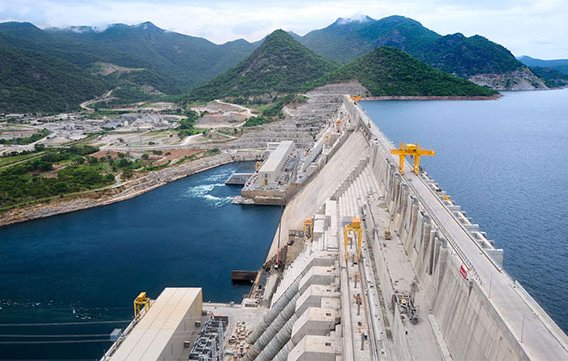In Luanda, the Angolan capital where the Atlantic breeze carries both the promise of prosperity and the weight of unrealized potential, African leaders recently convened to chart a new path for the continent’s future.
The Third Summit on Financing for Infrastructure Development in Africa, held under the patronage of Angolan President João Manuel Gonçalves Lourenço and the African Union Commission, was more than a policy forum it was a declaration of intent to build an Africa powered by African resources, innovation, and determination.
For four days, from October 28 to 31, Luanda became the epicentre of Africa’s infrastructure revolution. Presidents, ministers, financiers, and development partners met under the theme “Capital, Corridors, Trade: Investing in Infrastructure for the AfCFTA and Shared Prosperity.” Their mission was clear: transform political will into bankable projects and close the continent’s staggering infrastructure financing gap, estimated at US$130–170 billion annually by the African Development Bank.
President Lourenço set the tone in his opening address, urging action over rhetoric. “We must move from words to action,” he said. “This Summit represents a decisive step toward mobilizing the resources needed to enhance connectivity and integration across our continent.”
He emphasized that Africa’s infrastructure deficit was not only economic but also social and political—an obstacle to growth and unity. The message resonated: Africa is ready to finance its own destiny.
African Union Commission Chairperson Mahmoud Ali Youssouf described the summit as a turning point. “We are shifting from a logic of assistance to a logic of alliance,” he said, stressing that true partnership means aligning with Africa’s priorities. “What we are building here are not merely roads and bridges,” he added. “We are building an Africa that is connected, confident, and sovereign.”
AUDA-NEPAD CEO Nardos Bekele-Thomas highlighted the shift from fragmented financing to a unified strategy. Since the previous Dakar Summit, African financial institutions have mobilized US$1.5 billion for cross-border projects, including US$118 million under the Alliance for Green Infrastructure in Africa’s Project Development Fund. “The Luanda gathering is about deepening that momentum,” she said, “aligning financial innovation with Africa’s political will.”
Unlike many summits, Luanda delivered tangible outcomes. AUDA-NEPAD signed three landmark agreements showcasing Africa’s capacity to fund its own growth. These include mobilizing US$1.5 billion with the Alliance of African Multilateral Financial Institutions, tapping Africa’s pension funds through a partnership with the African Social Security Association, and launching the Africa Green Transition PPP Fund with CATA Energy to accelerate renewable energy investment.
Beyond the plenaries, “Project Boardrooms” buzzed with deal-making energy. Thirteen advanced projects in transport, energy, water, and ICT were pitched to investors. From the Grand Inga Hydropower Project to digital infrastructure corridors, the aim was to turn ideas into investments.
The InfraTech & Innovation Forum spotlighted startups developing AI-driven monitoring tools and e-mobility solutions, underscoring how Africa’s digital transformation is evolving alongside physical infrastructure.
One of the most ambitious initiatives came from AU Commissioner for Infrastructure and Energy Lerato Dorothy Mataboge, who unveiled a US$30 billion plan to modernize Africa’s aviation sector under the Single African Air Transport Market (SAATM). “Aviation is a strategic enabler of Agenda 2063 and the AfCFTA,” she said, adding that the plan will combine US$10 billion in public funding with US$20 billion in private and institutional investment.
The program will prioritize green airports powered by renewable energy to align with global sustainability goals. “As we modernize African skies, we are doing so sustainably,” Mataboge noted.
Angola, the summit’s host, embodied the spirit of self-driven progress. Preparing to celebrate 50 years of independence, the nation has embarked on a sweeping modernization program expanding airports, constructing hydroelectric dams such as Caculo Cabaça, and developing the Lobito Corridor to link Angola with the DRC and Zambia.
President Lourenço emphasized that every project must directly improve citizens’ lives. “Infrastructure development is a means to create jobs, promote trade, and improve living conditions,” he said.
Still, challenges remain. Delegates acknowledged hurdles such as limited fiscal space, currency instability, and investor skepticism driven by credit-rating agencies. Lourenço called for a fair reassessment of Africa’s economic record, arguing that “rating agencies often misrepresent our realities.”
The summit concluded with optimism and a clear direction. The Luanda Declaration, to be presented to African Union bodies, will consolidate commitments and guide future resource mobilization.
As the sun set over Luanda’s skyline its highways, cranes, and ports gleaming in the dusk the symbolism was clear. Africa, long defined by its infrastructure deficit, is now defining itself through determination and self-reliance.
“Our ambition is great,” Lourenço said in closing. “We aim to build infrastructure that powers technological development, electrification, and industrialization securing the future of our youth and generations to come.”
